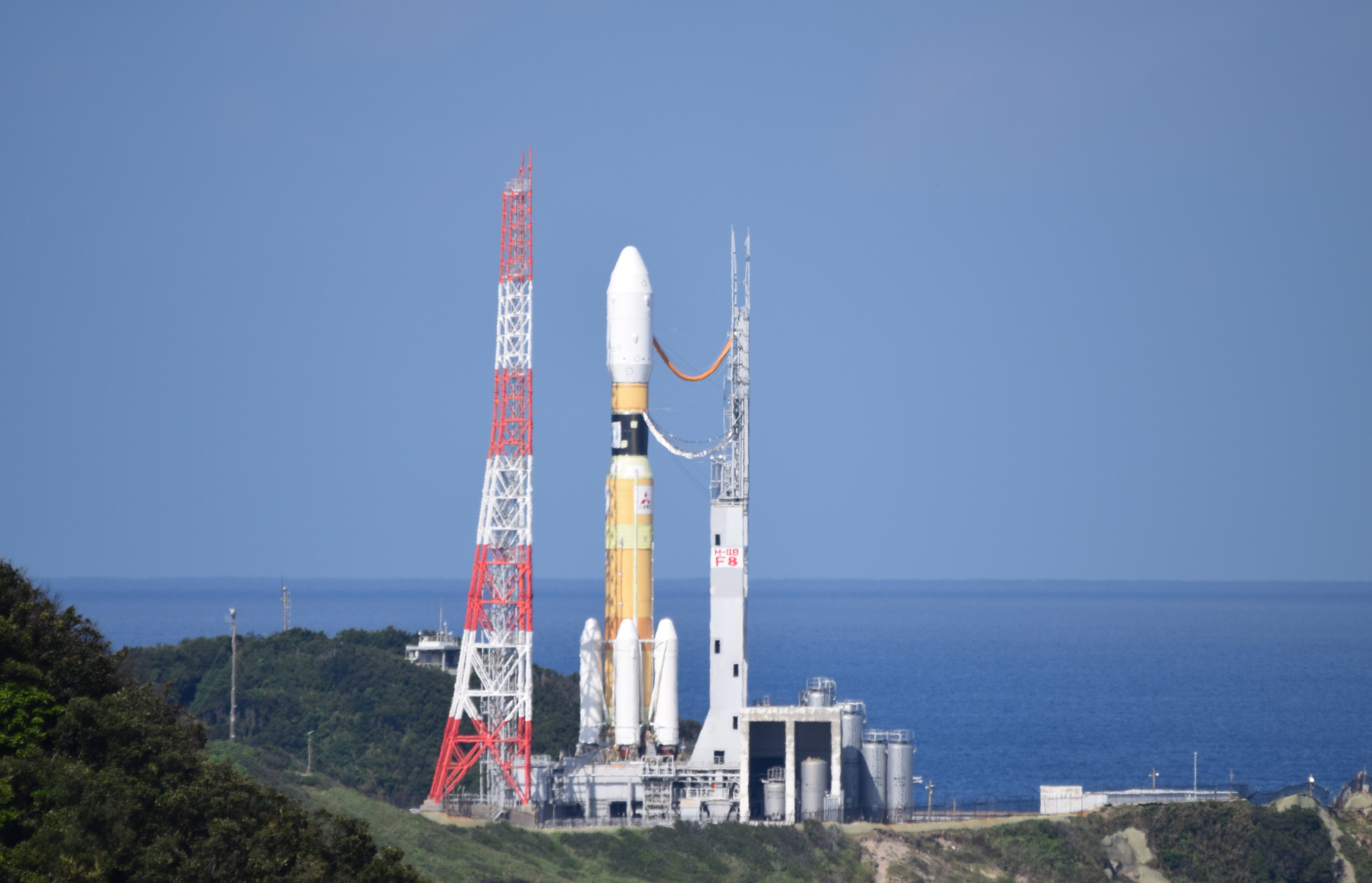Japan Is Launching an Unpiloted Cargo Ship to the Space Station Today. Watch Live
Liftoff is at 12:05 p.m. EDT (1605 GMT).
A unpiloted Japanese resupply ship will launch to the International Space Station today (Sept. 24) after a two-week delay due to a launchpad fire and you can watch the liftoff live online.
The Japan Aerospace Exploration Agency will launch the unpiloted spacecraft HTV-8 (also known as Kounotori8) toward the space station from the Tanegashima Space Center in southern Japan atop an H-IIB rocket. Liftoff is scheduled for 12:05 p.m. EDT (1605 GMT). It will be 1:05 a.m. Wednesday at the launch site. You can watch the launch live here via NASA TV at 11:30 a.m. EDT (1530 GMT). JAXA is offering its own webcast here beginning at 11:47 a.m. EDT (1547 GMT).
HTV-8 is hauling more than 4 tons of supplies to the International Space Station for the outpost's six-person crew. JAXA and Mitsubishi Heavy Industries, which built the H-IIB rocket, tried to launch the HTV-8 mission on Sept. 10, but a fire on the launchpad just below the rocket forced them to call off the launch.
Video: How Japan's HTV Cargo Ships Work
Related: Japan's HTV Space Truck Explained (Infographic)

MHI representatives have said the fire, a first for the company and JAXA, was caused by an unexpected concentration of flammable oxygen vapors at the pad. "We have taken corrective measures and have confirmed normal functioning of the rocket and facility," they said in a statement.
"Launch provider Mitsubishi Heavy Industries identified the root cause for the fire and set the new launch date after corrective measures were put in place," NASA officials wrote in a statement.
"Named Kounotori, meaning white stork in Japanese, the craft will deliver six new lithium-ion batteries and corresponding adapter plates that will replace aging nickel-hydrogen batteries for two power channels on the station's far port truss segment," NASA officials said in a statement. "The batteries will be installed through a series of robotics and spacewalks by the station’s crew members later this year."
Also riding aboard HTV-8 are a small, experimental satellite optical communication system called SOLIS (designed to allow 100Mbps downlink speeds from the space station), the experiment Hourglass to test the effects of gravity on powder and granular material and an upgrade for the station's Cell Biology Experiment Facility, NASA officials added.
Japan's HTV cargo ships are brilliant gold, cylindrical spacecraft designed for one-time delivery trips to the International Space Station. They launch on JAXA's H-IIB rockets built by Mitsubishi Heavy Industries, hence their name: H-II Transfer Vehicle, or HTV.
Photos: Japan's Robotic Space Cargo Ship Fleet
Get the Space.com Newsletter
Breaking space news, the latest updates on rocket launches, skywatching events and more!
Each HTV spacecraft includes internal compartment which astronauts can access from inside the station and an external payload area for exterior equipment like the new solar array batteries. At the end of their missions, HTV vehicles are filled with trash and released to intentionally burn up in Earth's atmosphere.
HTV-8 is currently scheduled to arrive at the International Space Station early Saturday (Sept. 28), where it will be captured by astronauts using the orbiting laboratory's robotic arm. The spacecraft will then be attached to an available docking port on the station's Harmony module.
NASA will webcast HTV-8's arrival at the space station on Saturday beginning at 5:45 a.m. EDT (0945 GMT), with robotic arm capture scheduled for 7:15 a.m. EDT (1115 GMT). NASA's webcast will resume at 9:30 a.m. EDT (1330 GMT) on Saturday to cover HTV-8's attachment to the Harmony module.
- Space Station's Robotic Cargo Ship Fleet (A Photo Guide)
- Photos: Japan Launches HTV-4 Cargo Ship to Space Station
- JAXA: Japan's Aerospace Exploration Agency
Email Tariq Malik at tmalik@space.com or follow him @tariqjmalik. Follow us @Spacedotcom and Facebook
Join our Space Forums to keep talking space on the latest missions, night sky and more! And if you have a news tip, correction or comment, let us know at: community@space.com.

Tariq is the Editor-in-Chief of Space.com and joined the team in 2001, first as an intern and staff writer, and later as an editor. He covers human spaceflight, exploration and space science, as well as skywatching and entertainment. He became Space.com's Managing Editor in 2009 and Editor-in-Chief in 2019. Before joining Space.com, Tariq was a staff reporter for The Los Angeles Times covering education and city beats in La Habra, Fullerton and Huntington Beach. In October 2022, Tariq received the Harry Kolcum Award for excellence in space reporting from the National Space Club Florida Committee. He is also an Eagle Scout (yes, he has the Space Exploration merit badge) and went to Space Camp four times as a kid and a fifth time as an adult. He has journalism degrees from the University of Southern California and New York University. You can find Tariq at Space.com and as the co-host to the This Week In Space podcast with space historian Rod Pyle on the TWiT network. To see his latest project, you can follow Tariq on Twitter @tariqjmalik.









